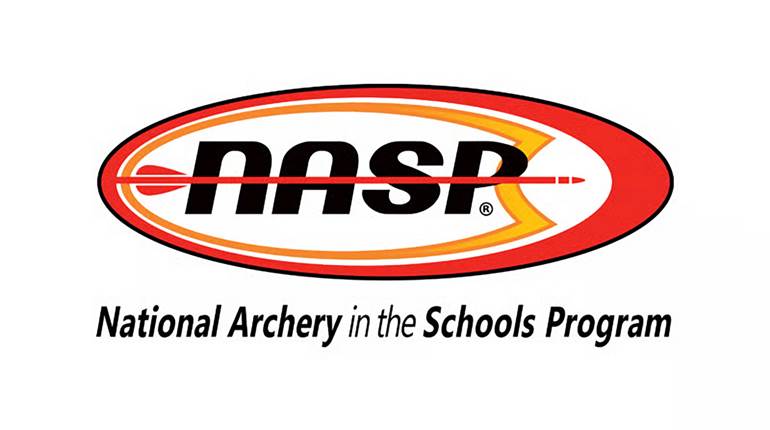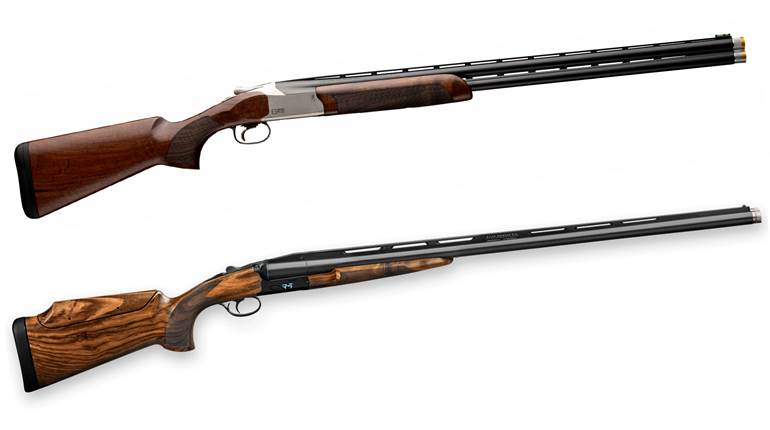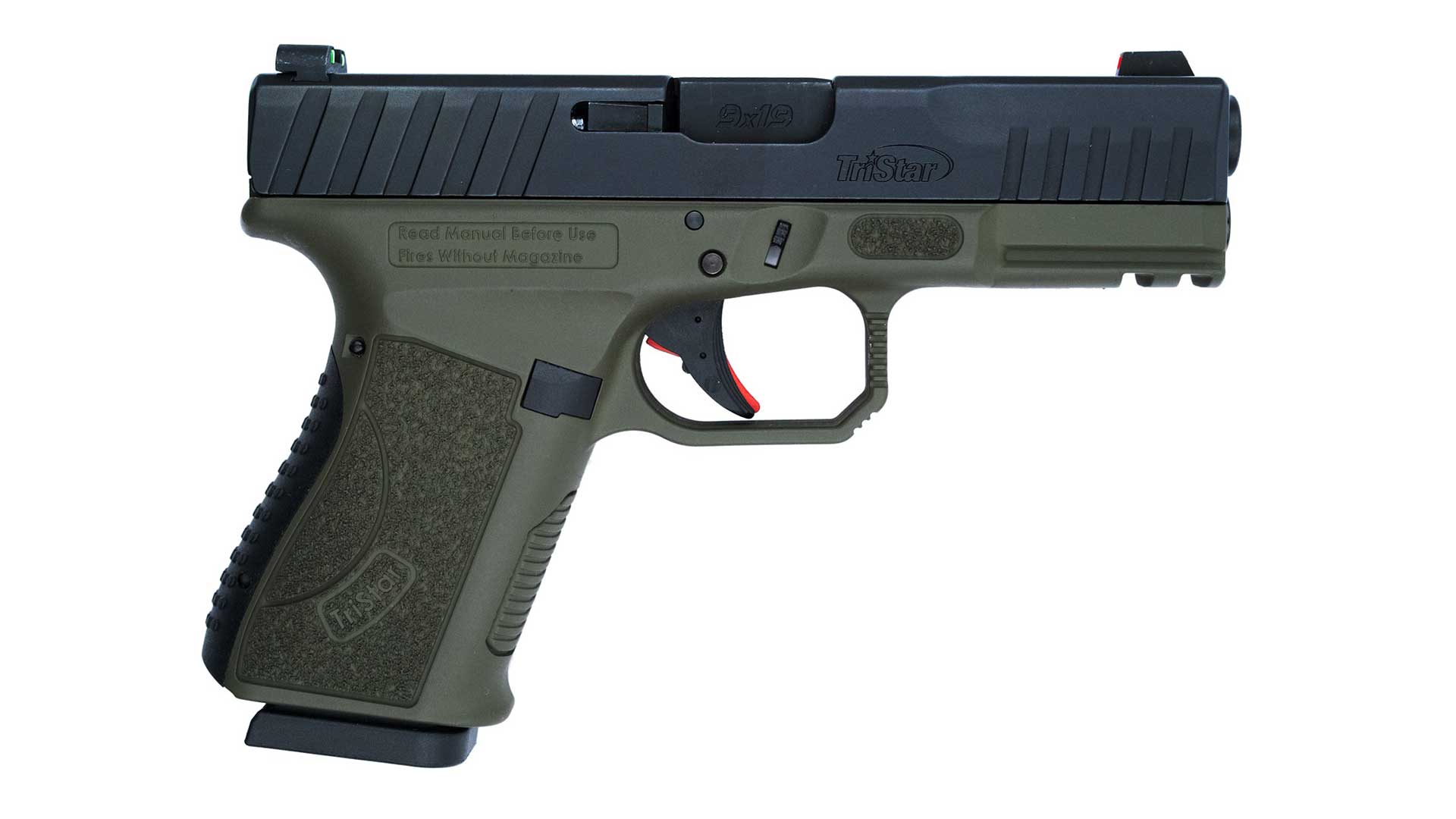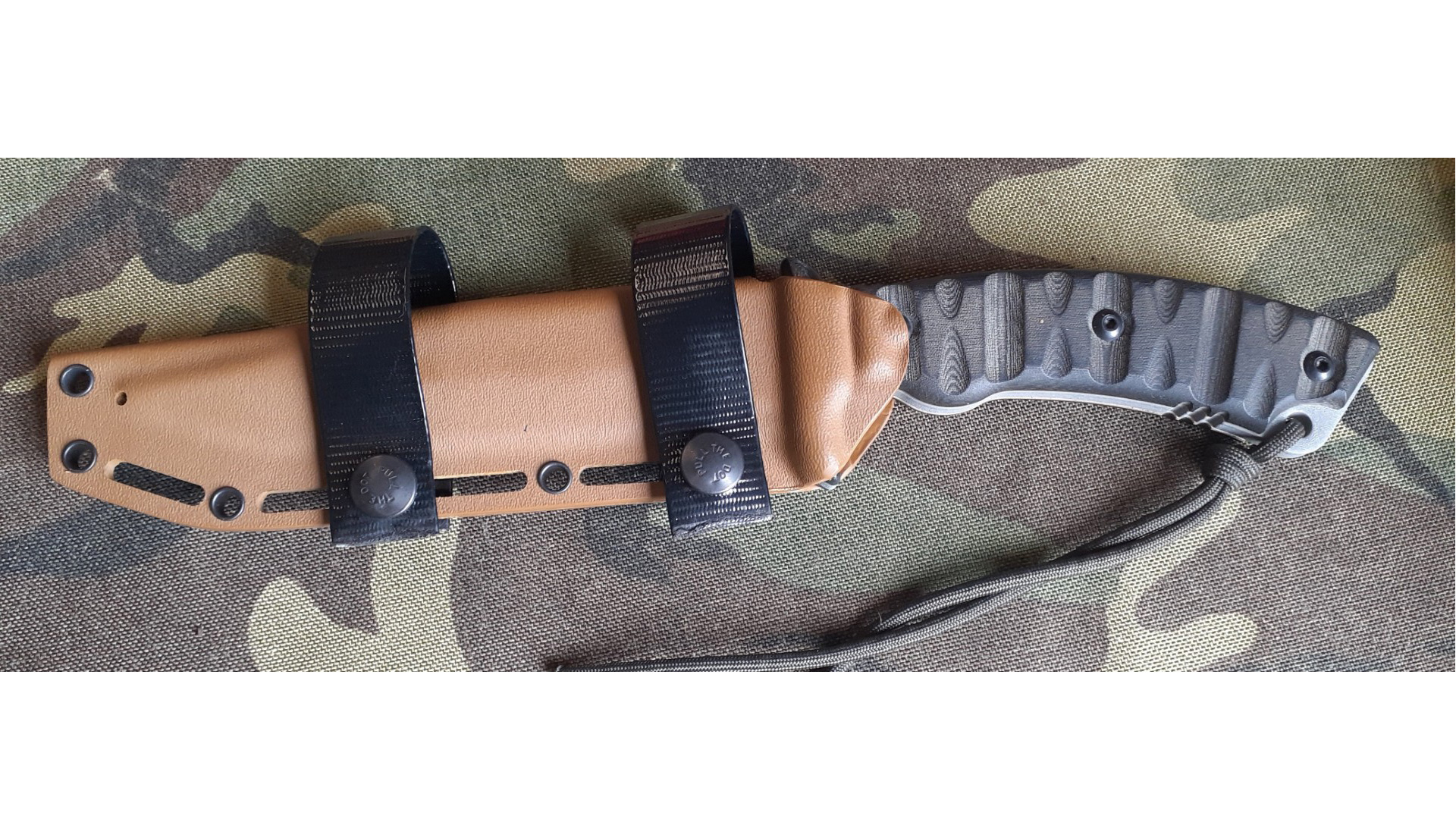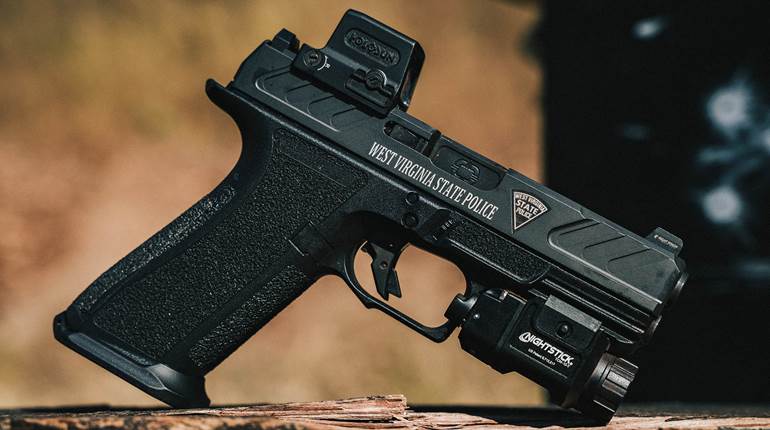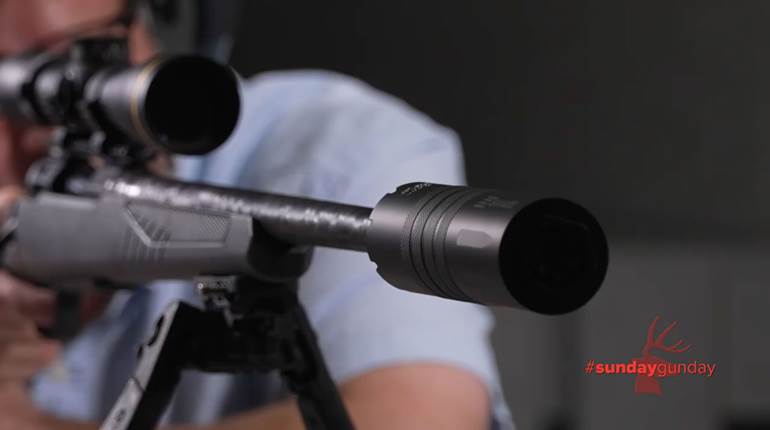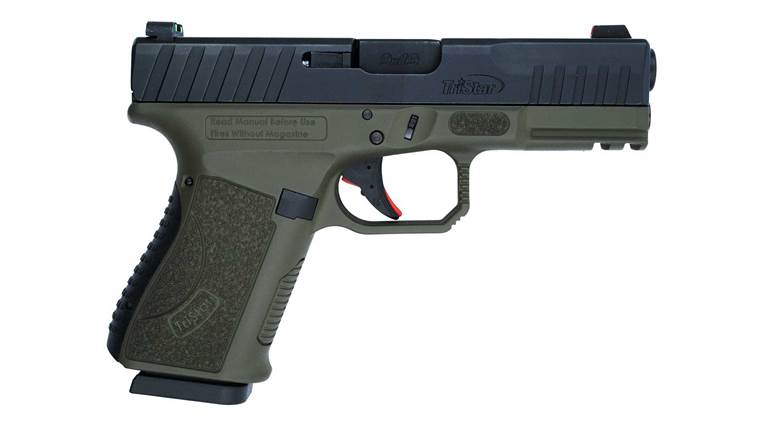
I hate to clean guns. In fact, I consider it slave labor forced on me as a debt that’s due for the pleasure of shooting, which I love to do. I not only shoot for a living, testing guns and writing about them, but on my rare days off I am usually shooting in competition or out hunting. I even slip out to my backyard range now and then at lunch time to pound some steel targets with a handgun for “stress relief.” All the guns that are shot must be cleaned, so for something I detest as much as cleaning guns, I seem to spend a lot of time doing it.
One policy that I try to enforce is that the guns are taken care of every time they are used. If I am shooting at lunch that means it’s unloaded, wiped down and put away. For hunting or more extensive shooting sessions, it’s something more. It’s not always easy to follow my own rules. For example, my son Nathan and I compete most summer weekends in Cowboy Action Shooting. Normally we will have at least 10 guns with us for each match. That’s two revolvers, a rifle and a couple of shotguns each. The closest match for us is about a two-hour drive, and, with all the windshield time as well as a long day of shooting, the last thing we want to do after the truck tires hit the driveway is clean guns. But, I insist that the equipment is taken care of before we relax.

Handguns are disassembled and a Hoppe’s BoreSnake cleaner with solvent is passed a couple of times through each chamber in the cylinder and through the barrel from the back to the front. We scrub the gunk off the frame and the cylinder with an old tooth brush and some solvent, and then we wipe it dry with a cloth. The guns are put back together and sprayed with a metal protector, wiped down with a rag and put away.
Rifles get the same treatment, including a couple of passes with a BoreSnake, which is a great invention. I don’t think it replaces a traditional cleaning rod with patches and brushes, but it’s fast and easy for a “light” cleaning. The shotguns get a few passes with an Outers Tico tool.

This “fuzzy stick” is the slickest thing for cleaning shotgun bores ever invented. The final pass is made with the removable oiling mop attached and wet with metal protector. Then everything is sprayed with metal protector and wiped down.
Some firearms with case-hardened finishes are clearly not protected by some of the metal protectors on the market. Using some of them, I have experienced rusting within days. The worst offenders seem to be handguns with the case-hardened finish on the frames. My guess is that the metal protector is not able to penetrate the surface of the metal and flashes off, but that’s only a guess. Oil, RIG grease and WD40 have always worked just fine. Although I hear WD40 disparaged by a lot of gun people, I have used it for years on the outside of my guns for short-term storage and have always been pleased with the results. We also spray it on fishing lures when trolling for lake trout.

About every third match, instead of using the bore snake, we will clean the bores more extensively. A good scrubbing with brushes and solvent are needed to clean out the powder and lead fouling that accumulates after a long match. In truth, we should probably do this after every match; but, like I said, I hate cleaning guns!
As tough as it is to stop and clean the guns after a match, it seems even tougher after a long day of hunting—especially the way I do it. I’ll put the unloaded gun near a gentle heat source while I shower, change and eat. By then it’s up to room temperature and dry from any rain or condensation. Mentally, it’s tough to step up to the plate and take care of the gun when what I really want is some bourbon and ice followed by a bed.
If I am hunting again in the morning, I usually just wipe the gun down and keep it near the heat so it dries completely. If it got extremely wet or if I am putting it away for a few days I will take it apart as far as practical and dry all the parts, then coat them with a metal protector. The action gets a spray of a lubricating protector that will not accumulate and gum, and will not gel up in cold weather.

I make a pass through the barrel with a BoreSnake with a little bit of metal protector on it. Or I run a patch wet with metal protector through the gun, followed a few minutes later by a dry patch. This will leave a microscopic coating on the bore to protect it, but shouldn’t have a lot of effect on the bullet’s point of impact. I am a bit of a paranoid about fouling shots, so I’ll fire a shot if possible before hunting again. If it’s not possible, I fret and worry, but, in truth, never have a problem.
The most misunderstood aspect of cleaning guns is how to properly clean the bore. It’s often done incorrectly, but it’s critical to the life of the gun as well as to its performance. When I have a rifle come into my shop that is having accuracy problems, the very first thing I do to it is clean the bore completely. More often than not that will correct the problem. I give the gun back to the owner, and they think I am a genius—in reality I am merely persistent. The owner will always insist that he has cleaned the gun and so that can’t be the problem. He cleaned it, no doubt, but likely not the right way. So, I don’t argue, I just smile and let him think I know the secret code to fixing misbehaving rifles.
Running a few patches with some solvent through the barrel is not enough. You must clean the barrel down to bare steel and remove all powder and metal fouling. That’s not easy and it’s often not fast. I have a custom rifle with a Krieger Barrel that is easy to clean. In spite of the fact it is chambered for an extreme wildcat, the .358 UMT, the bore on this gun is so good that it rarely fouls, and, when it does, it’s very easy to clean. But, it’s at one very lonely end of the spectrum. Most rifle barrels, particularly factory guns, are somewhere closer to the other end of the bell curve, and they will take more effort to clean. I can’t say how many patches or how many swipes of the brush will be required to clean any specific rifle, nobody can. What I can give you is some guidelines on how to do it correctly and how to tell when you are done.
When possible, clean from the breech and use a rod guide. This is a tool that inserts into the action after you remove the bolt. It will fit into the chamber and extend out past the back of the action. This provides a pipeline from the front of the gun to the bore. The best guides not only keep the rod aligned with the bore, but also protect the action from dripping solvent and crud, and they are a great aid in starting the patch.

Some rifles such as semi-automatic, lever-action or pump-actions must be cleaned from the muzzle. It is important in that situation to use a muzzle guide to align the rod with the bore and to protect the crown from cleaning-rod wear. The guide keeps the rod centered in the bore so it will not contact the muzzle and cause wear or damage. The down side of a muzzle guide is that the hole is usually rod-size, so you can’t push a patch through it. The guide stays on the rod and the patch must be started into the bore without the use of the rod guide. This is a window of vulnerability when crown damage can occur, so extreme care is needed when starting the patch. Once the patch is a few inches down the bore the muzzle rod guide can be slid down the rod and put in place on the muzzle. Turn these rifles upside-down in the cradle so that the solvent will not run into the action. Also, put a rag in the action to catch the crud you push out of the barrel.
The patch should fit snugly, but not so tightly as to be difficult to push down the barrel. When I find a patch that fits well for a rifle I shoot a lot, I buy a bunch of them. I prefer cotton, but buy whatever is on sale. To clean a rifle right you will use a lot of patches.
Brushes should be bronze for most cleaning chores. Nylon doesn’t have the scrubbing ability, and stainless steel can gall and ruin the barrel. I usually buy one size larger than my bore size.The jag should fit the bore snugly with the patch you are using, and it should hold the patch securely. I prefer brass because I want a jag that is made of a material softer than my rifle bore so that it will not scratch or damage it.
Solvents are the key to cleaning a rifle, and it’s there that we have made so much progress in the past couple of generations. Today’s advanced chemistry is far better than my grandfather’s generation had. He told me that they used to put mercury into a barrel to remove metal fouling. Today we have chemicals that are much safer and probably more effective. But they can be nasty, so always wear safety glasses and rubber or latex gloves, and make sure you have good ventilation.
I usually start cleaning the bore with a general bore solvent, making several passes through with a new wet patch each time. Use each patch for only one pass before replacing it with a new solvent-soaked patch. Don’t scrub, but instead push the patch straight through the bore. You may want to let the gun soak a few minutes between patches to allow the solvent to work.

Leaving the barrel wet with solvent, use a properly fitted brush soaked with solvent to make several passes. Keep the brush wet with solvent, reapplying after every couple of passes. (But don’t dip it in the solvent bottle, as this will contaminate the remaining solvent.) Don’t reverse the brush in the bore, instead push it all the way out the muzzle then pull it back through. After use, always clean the solvent from your brush with a degreasing spray. This is to prevent abrasive debris from accumulating and also because some solvents will eat the bronze bristles.
Let the gun sit for a few minutes and then follow with a wet and several dry patches to remove all traces of solvent. Now make a couple of passes with patches soaked with copper-removing solvent. Be sure to read the instructions on the label. Most recommend that they not be left in the bore for more than 15 minutes. Let the bore soak for a few minutes and follow with another patch wet with copper solvent followed by a dry patch. Then repeat. When you have patches coming out with no trace of green or blue (it may take a while if the fouling is extensive), dry the bore with several clean patches. Remember, though, that a brass jag can leave a “false” stain on the patch. When in doubt use a plastic or stainless steel jag.
Scrub again with the general solvent using patches and brushes. Dry and repeat the copper solvent treatment. Sometimes metal fouling can be trapped under layers of baked-on powder fouling that you must remove to allow the copper solvent to get at the metal fouling. Keep repeating this process until you have no sign of blue or green on any patches. If you let the solvent work for five minutes before you push a patch down the bore and the patch is the same color coming out as it was going in, your rifle is clean. If there are any stains on the patch, you still have work to do.
Finally, after cleaning with any of the above techniques, dry the bore with several clean patches and apply a rust protector by running several saturated patches down the barrel. Wait a minute or two, then run one dry patch through to remove the excess. This will leave just enough rust preventative to protect the bore. Do not let any lubricant accumulate in the chamber. Lightly wipe it down with rust preventative, and then dry it with a Tipton’s Shooter’s Swab or Chamber Mop. Both are available from Midway and other dealers.

Before shooting, wipe the chamber again and run a single dry patch through the barrel to remove any rust preventive. This will leave a residual amount of protector to help lubricate the first bullet’s passage.
Internal parts can often be cleaned without taking the gun apart by spraying a large volume of degreaser into every opening you can find, working the action as you go. Let the spray run out and flush debris with it. After the degreaser dries the metal will be chemically clean, so it’s important to coat it with a good lubricant that also protects against rust. Make sure it’s not temperature- sensitive. Dirt, grease and gunk can accumulate in the action, bolt or trigger and sometimes you have to take things apart to clean them. Make sure you can get it back together, if in doubt, take it to a gunsmith.
Gunsmiths do a sizable business reassembling guns that people take apart to clean and can’t get back together. But, there’s no shame in it—besides, their kids have to eat, too!
This feature article appeared originally in the December 2004 issue of American Rifleman. To subscribe to the magazine, visit the NRA membership page and select American Rifleman as your member magazine.













